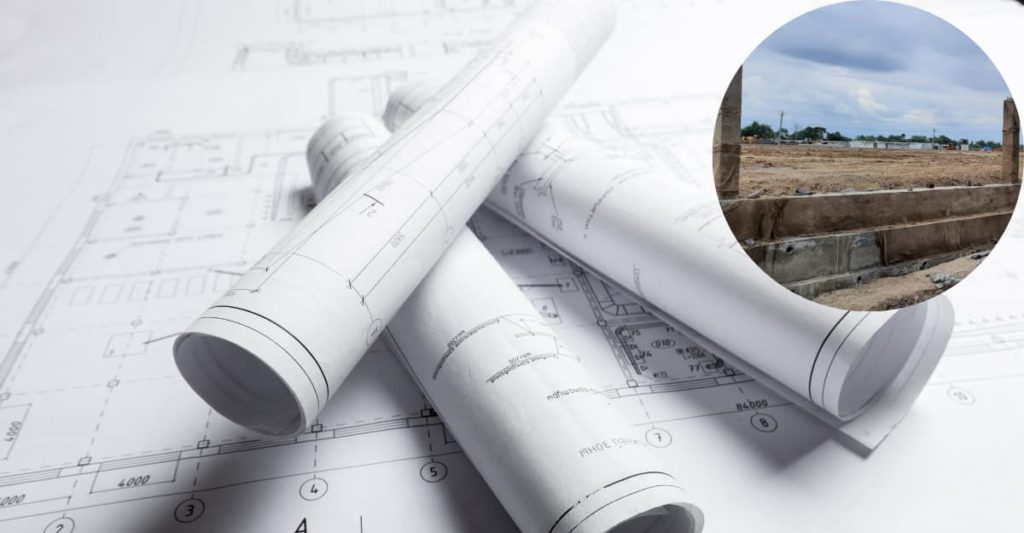These days civil consultants who design industrial projects use plum concrete very commonly as a way to optimize the project.
What is Plum Concrete?
Plum concrete is when medium and large hard stones are used in concrete. Plum concrete is also known as cyclopean concrete or rubble concrete. Plums can be stone aggregates of 150 mm, 200 mm, 300 mm or larger sizes. The size of the stone in the concrete is based on the application, availability of local materials and engineering decisions.
When plum concrete is for constructing structures like gravity dams, as barriers for bridges and culverts, for mass concrete of machine foundations, retaining walls etc., the maximum plum’s size shall be 150 mm.
What are the important properties of plum?
Plums shall be trap, basalt, or any locally available stone with a minimum crushing strength of 100 Kg/Sq.mm and hard, strong, durable, angular shaped without weathered or rounded surfaces, seams, cracks, flakes, or other structural defects.
It shall be free of soil, dirt, clay, organic matter & harmful materials, which shall affect the proper adhesion of concrete. The materials for plum batching is um materials shall be carried out by carefully handpicking and inspection before use.
Why Plum Concrete, and how is it different from PCC?
Plum Concrete is an economic adaption of mass concreting. The difference between PCC and plum concrete is that large boulders are added to the concrete as filler materials, thereby reducing the cost of PCC. The use of plums in concrete saves the cost of PCC up to 30%.
What are the uses of Plum Concrete?
It is used in mass concreting work where the requirement of PCC thickness is very high due to the strata. Also, it is applied underneath footings where the slop of ground under individual footing is 1:10 to 1:50. It is also used to construct gravity dams, retaining walls, barriers for bridges and culverts, maintaining steep slopes of road embankments, surface bed for water channels, machinery foundations, and similar locations. It is recommended at locations where mass concreting is required or filling deep or uneven sites, etc.
What is the Plum to Concrete Ratio?
Plum volume in concrete shall be as per the engineering specification based on application. When the stones are of 150 mm size, the plum volume in the total concrete shall be kept at 30% to 50% by volume of the finished work. When plums are beyond 160 mm up to any reasonable size is used, the volume of plums shall be limited to 20% by volume of finished concrete work.
Preparation of Plum Concrete
The plum concrete shall be prepared either by adding plums directly into the concrete mixer or spreading the plums over the concrete layer and placing another layer of concrete. When plums are directly added to the mixer, the size of plums shall not be more than 1/3rd of the cross-section of the concrete mixer.
What is the Grade of Concrete used for Plum Concrete?
Specification for concrete ingredients, mixing, placing and testing concrete, etc., shall be as per IS 456. Generally, M10 or M15 concrete is used for plum concrete.
Are there any special requirements for Shuttering & Centering for Plum Concrete?
Shuttering shall be carried out using suitable materials as specified in the drawing and specification to obtain the necessary shape of the structure. For shuttering, steelwork or plywood shuttering is strong enough and does not get damaged or misplaced when placing stones and concrete.
Preparatory works before plum concrete
Clean the surface, remove soft soil, dirt and all loose items which may affect soil bearing capacity. Wet the surface area by sprinkling water and keep the surface moist till the placement of plum concrete to ensure a proper bond between the ground surface and plum concrete. Furthermore, the anti-termite treatment If the specification mentions anti-termite treatment, the same shall be sprayed on the surface before placing of plums.
How to place plums and concrete?
First layer: Boulders should be placed on the ground with sufficient gaps. Spread the plum material. Pour the concrete to fill the gaps between the boulders.
Subsequent Layers: Stones shall not be placed first before placing concrete except for the first layer. Spread the concrete evenly. This completes the first layer is complete, place concrete to the thickness of 150 mm, handpick and place stones 150mm apart and push the stones down into the concrete layer. Continue this process till the specified height of plum concrete structure reaches. For any size of plums, the thickness of each layer shall not exceed 900 mm and each division shall not be less than 150 mm. Civil consultants recommend higher size of plums where plum concrete is a levelling course under foundations and as surface bed for water channels.
Each stone should be surrounded by at least 150 mm of concrete. The stone should be closer than 300 mm to any top surface or closer than 150 mm to any coping. The space between stones shall not be filled with smaller stone chips. The filler material shall only be concrete. Day joints shall be provided with boulders with 50% protrusion above the surface to ensure proper key for joints.
What is the Curing Procedure for Plum Concrete?
Civil consultants for industrial projects recommend curing for seven days and as per curing procedure for concrete.
To conclude, civil consultants who design industrial projects recommend plum concrete based on site conditions and project requirements.












